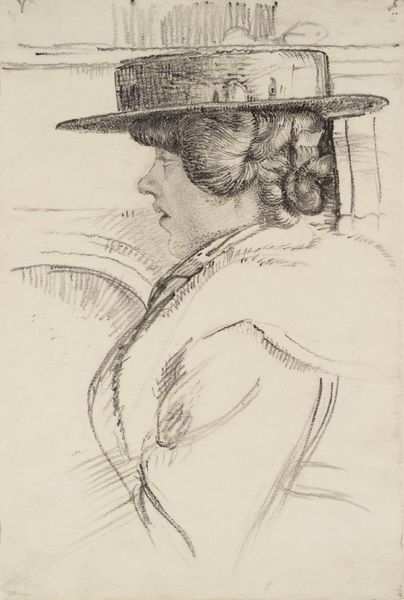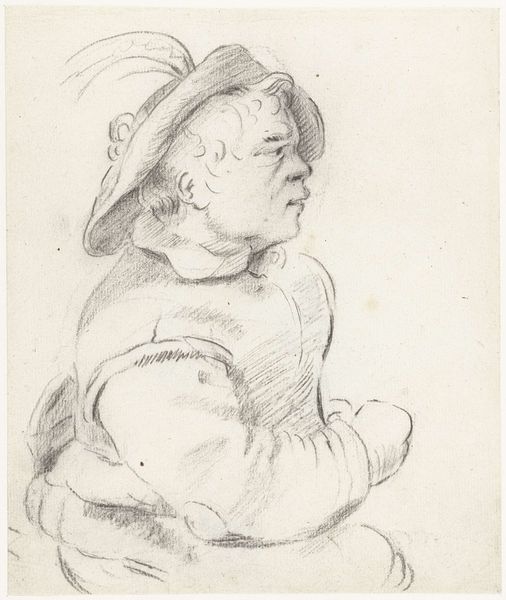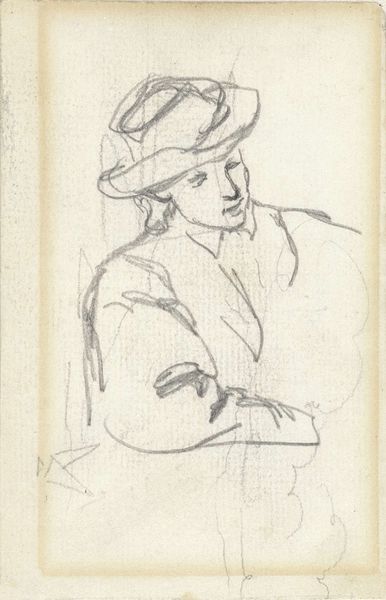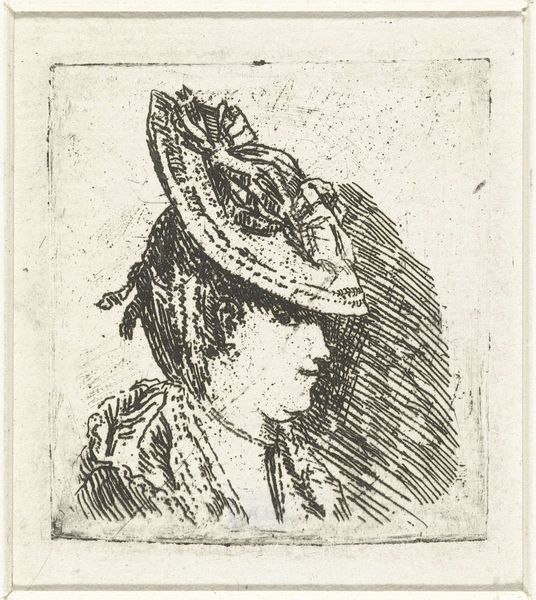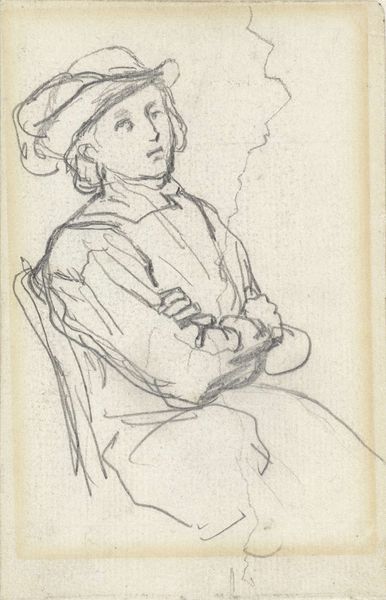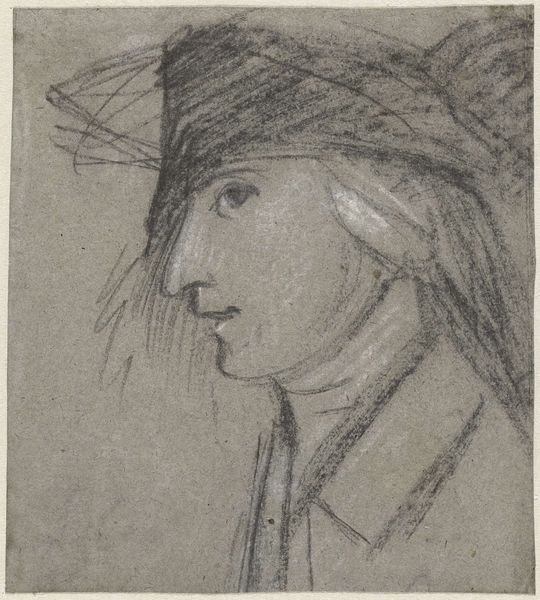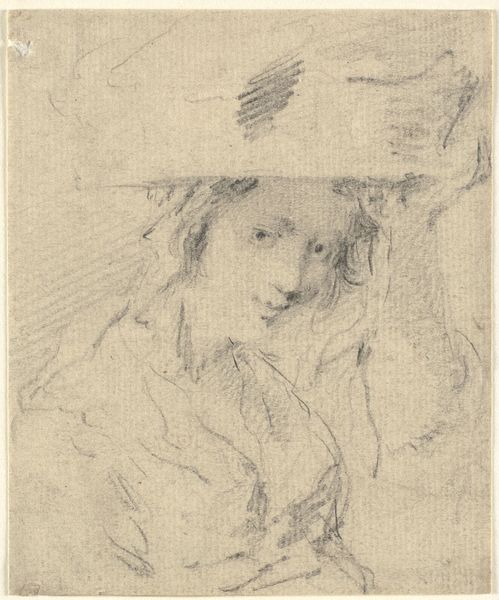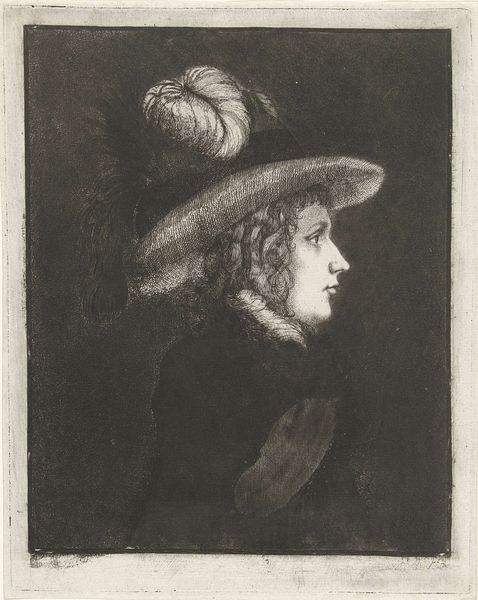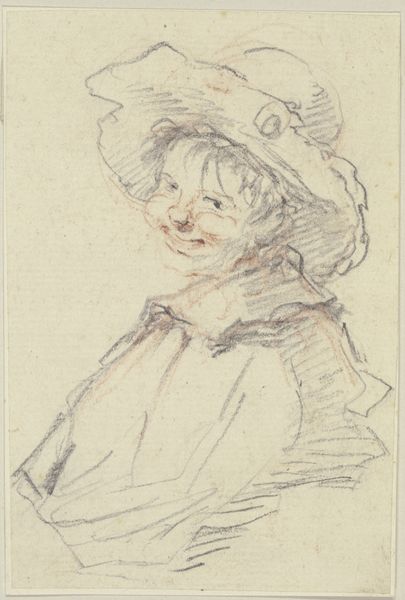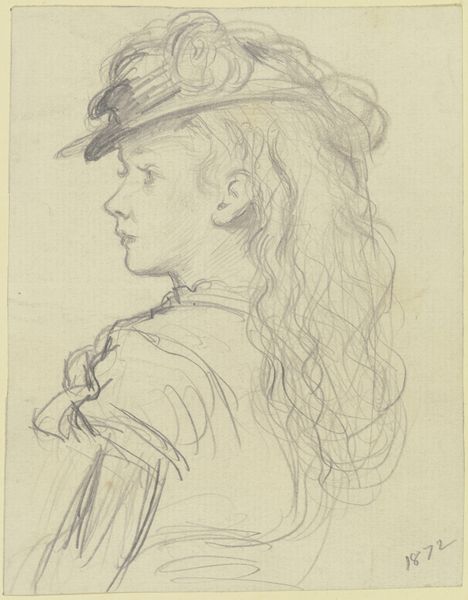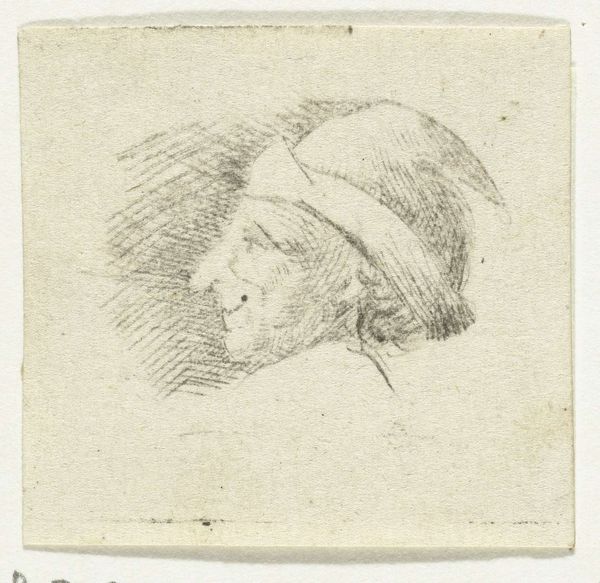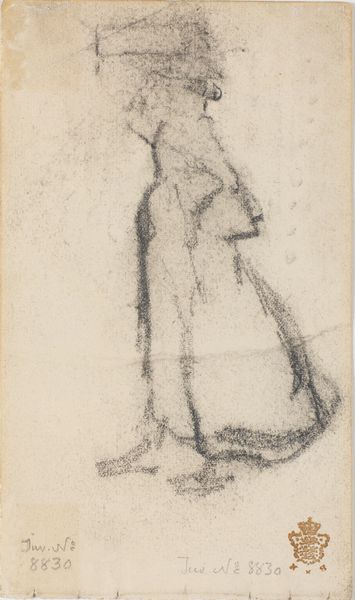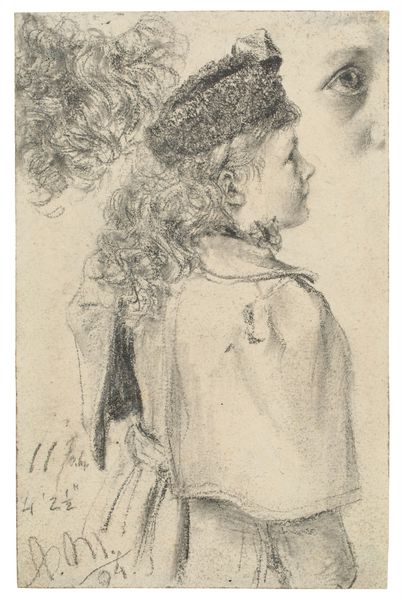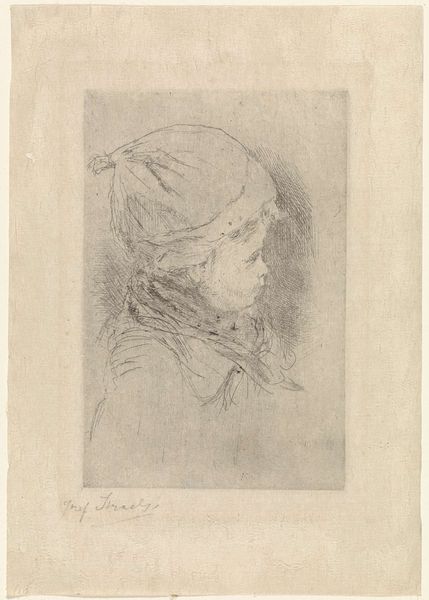
drawing, pencil
#
portrait
#
drawing
#
amateur sketch
#
thin stroke sketch
#
pen illustration
#
pen sketch
#
pencil sketch
#
linework heavy
#
ink drawing experimentation
#
pen-ink sketch
#
pencil
#
line
#
pencil work
#
realism
#
initial sketch
Dimensions: height 158 mm, width 157 mm
Copyright: Rijks Museum: Open Domain
Curator: Here we have "Dame met een hoed", or "Lady with a Hat," a pencil drawing likely created between 1865 and 1913. The piece is housed right here at the Rijksmuseum and attributed to Bramine Hubrecht. Editor: My initial reaction is the delicacy. It seems more like a fleeting impression than a finished piece, a very light application of graphite on the page. Curator: That's an insightful observation. Hubrecht was not a professional artist, and works like these offer an interesting view into the artistic pursuits of women of the time who weren’t part of the formal art world. Drawing, like needlework, became an acceptable avenue for creative expression within certain social circles. Editor: I’m struck by the mark-making itself. Look at the repetitive, almost scribbled lines that build up the form of the hat and the coat. It seems less about capturing an accurate likeness and more about the repetitive process of applying the pencil to paper. A labor of love, perhaps? Curator: Indeed. It speaks to the conventions of portraiture at the time, which were seeping into middle-class artistic practice. How did these women perceive themselves, or want to be seen, as patrons of art changed? Amateur artistry like this gives us a chance to challenge art historical narratives. Editor: Absolutely. And thinking about the material limitations—the cost of paper, the availability of pencils—tells us something about the broader economic context in which this image was produced and consumed. It makes one consider the relative affluence that was needed even for such a seemingly modest undertaking. Curator: Precisely! Hubrecht’s drawing exists within a larger network of social expectations and material conditions, challenging us to reconsider who gets to be an artist and what constitutes "art." Editor: Looking closely, you also start to wonder about the quality of pencils from that time! You notice that some sections of the image are quite darker than others, suggesting differences in the materials, and perhaps different sessions of creation. Curator: These small details really are where history comes alive, prompting us to broaden the story that's often told about art history! Editor: It’s fascinating how this simple drawing opens up complex questions about labor, access, and the very definition of art making. Curator: Agreed, an object is rarely just itself. The story continues, if you are willing to look for it.
Comments
No comments
Be the first to comment and join the conversation on the ultimate creative platform.
